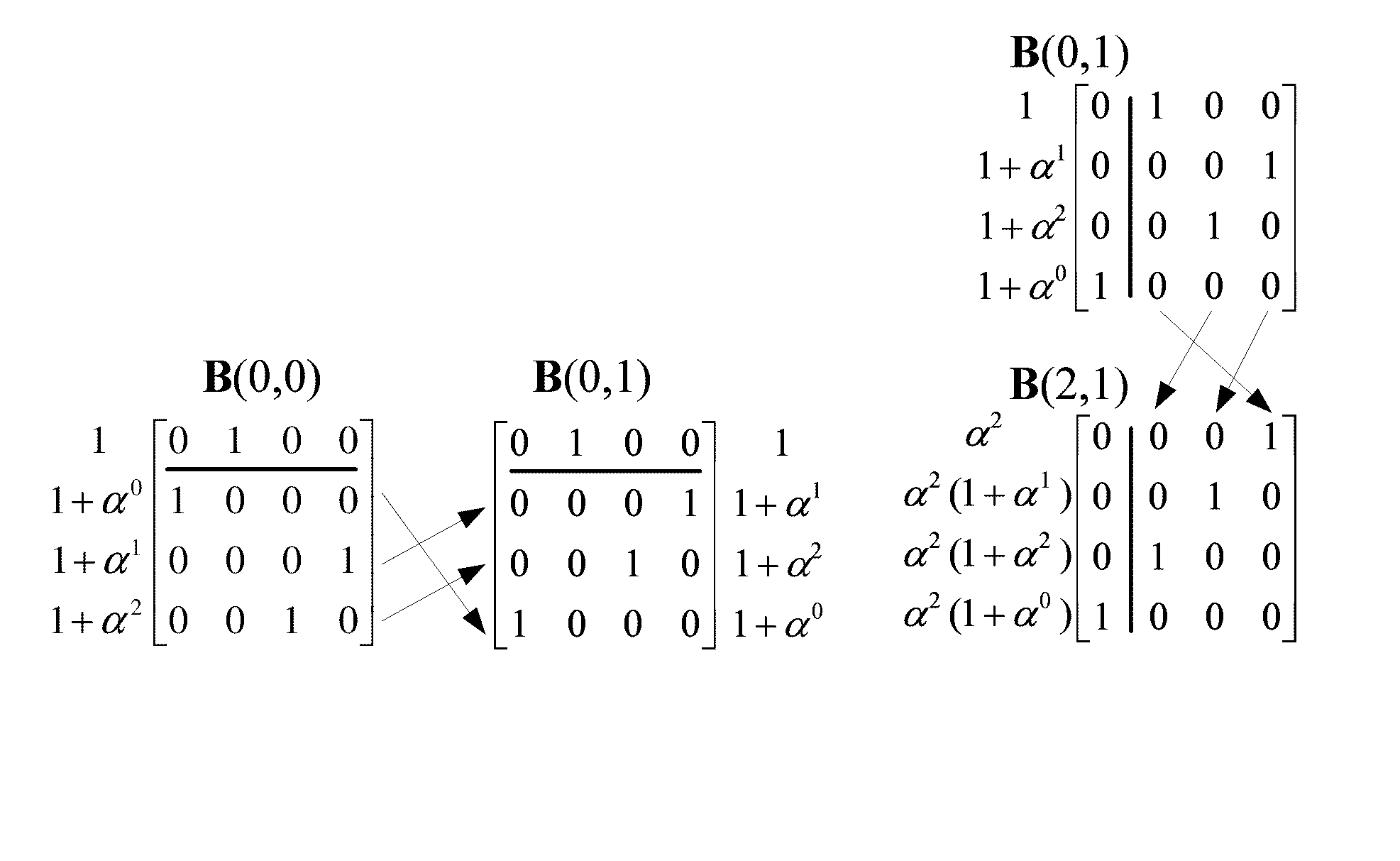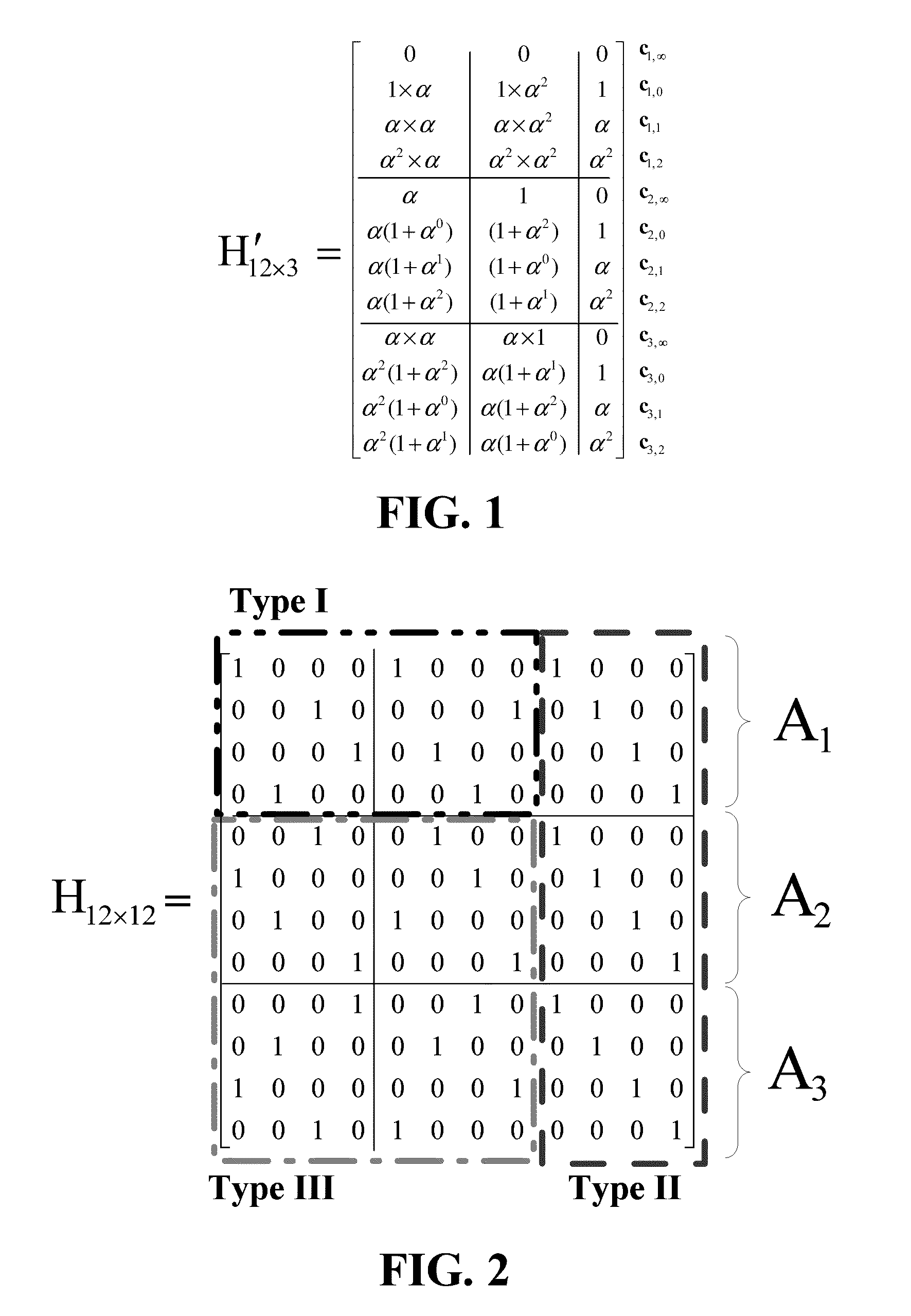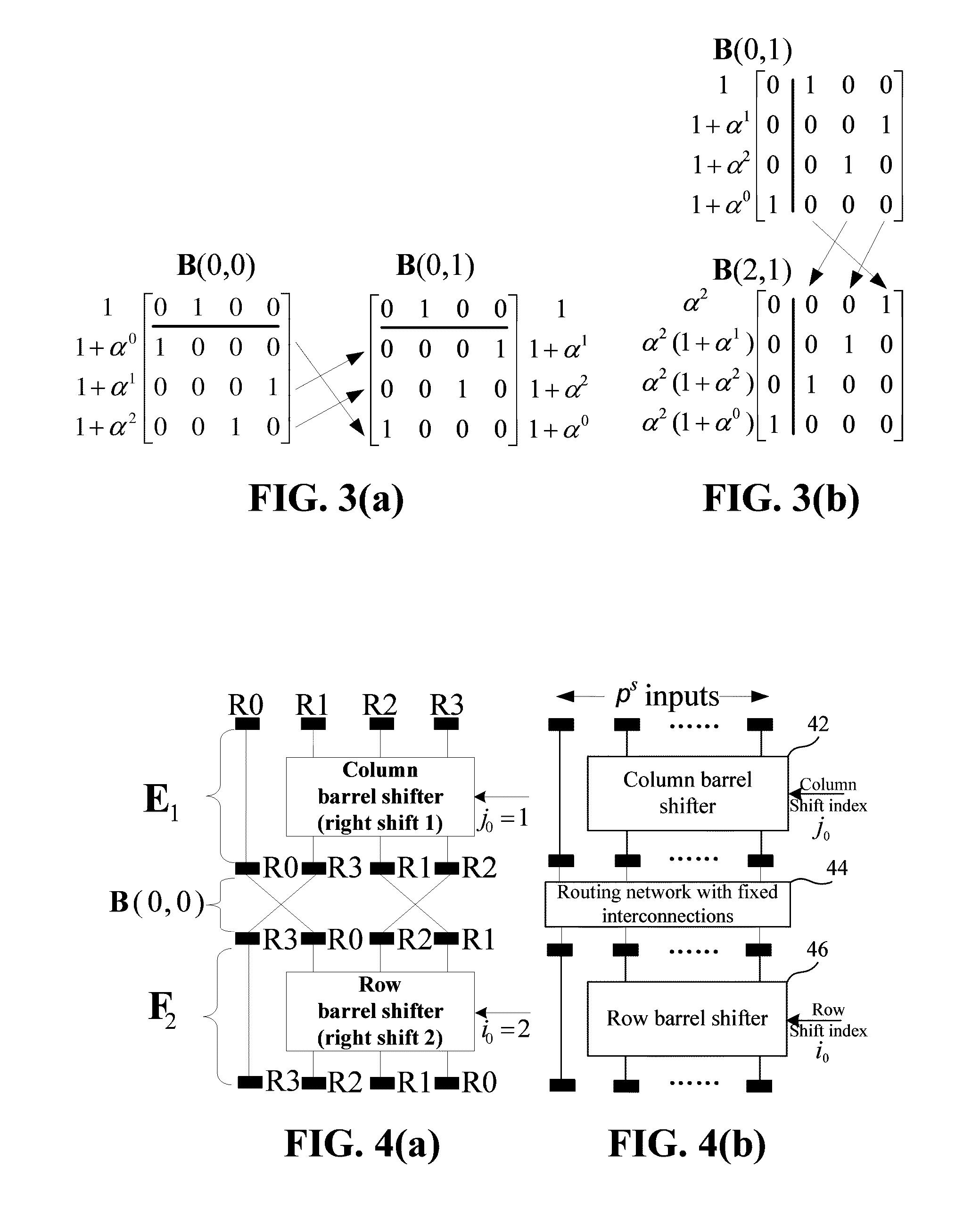Decoder and decoding method for low-density parity check codes constructed based on reed-solomon codes
a parity check and decoding method technology, applied in the field of decoders in communication systems and storage systems, can solve the problems of increasing the complexity of the silicon area of the fully-parallel ldpc decoder, and increasing the complexity of the code length. the effect of increasing the complexity of the multi-mode function implementation
- Summary
- Abstract
- Description
- Claims
- Application Information
AI Technical Summary
Benefits of technology
Problems solved by technology
Method used
Image
Examples
Embodiment Construction
I. Introduction
[0028]The following description is organized as follows. First, the structural properties of the parity-check matrices are introduced and the permutator architecture for the RS-LDPC codes is proposed. Then, the shuffled MPD and the associated BER results for the RS-LDPC codes are presented. Thereafter, the proposed decoder architecture is presented. The implementation results and comparison of the proposed decoder with other related works are then described.
II. Permutator Architecture for RS-LDPC Codes
A. LDPC Codes Based on Shortened RS Codes
[0029]Consider the Galois field GF(ps), where p is a prime and s is a positive integer. If we let α be a primitive element of GF(ps), with a positive integer ρ, where 2≦ρ≦ps, we can construct an RS code over GF(ps), whose generator polynomial is given by:
g(X)=(X+α)(X−α2) . . . (X−αρ−2)=g0+g1X+g2X2+ . . . +Xρ−2, (1)
[0030]where gi εGF(ps). The ρ−1 coefficients of g(X) are nonzero. If we shorten the RS code by deleting the first (ps...
PUM
 Login to View More
Login to View More Abstract
Description
Claims
Application Information
 Login to View More
Login to View More - R&D
- Intellectual Property
- Life Sciences
- Materials
- Tech Scout
- Unparalleled Data Quality
- Higher Quality Content
- 60% Fewer Hallucinations
Browse by: Latest US Patents, China's latest patents, Technical Efficacy Thesaurus, Application Domain, Technology Topic, Popular Technical Reports.
© 2025 PatSnap. All rights reserved.Legal|Privacy policy|Modern Slavery Act Transparency Statement|Sitemap|About US| Contact US: help@patsnap.com



